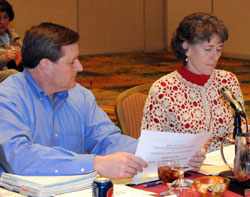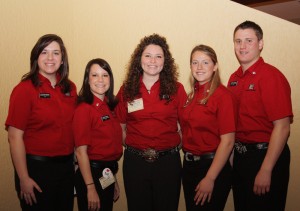 Apple just announced its newest creation – the iPad. There is an agricultural slant to this story. What is it? The continuing development of information technology that’s changing the way we market and engage our audience.
Apple just announced its newest creation – the iPad. There is an agricultural slant to this story. What is it? The continuing development of information technology that’s changing the way we market and engage our audience.
I can see me using one of these to participate in AgChat for example. Or do just about anything else I want to do on the web. Will it replace my Mac? No. Do I want one? Yes. I’m on the notification list for when they become available
A large, high-resolution LED-backlit, IPS display. An incredibly responsive Multi-Touch screen. And an amazingly powerful, Apple-designed chip. All in a design that’s thin and light enough to take anywhere. iPad isn’t just the best device of its kind. It’s a whole new kind of device.
The high-resolution, 9.7 inch LED-backlit, IPS display on iPad is remarkably crisp and vivid. Which makes it perfect for web browsing, watching movies, or showing off photos. It’s also been designed to work in any orientation — portrait or landscape. And because it uses a display technology called IPS (in-plane switching), it has a wide, 178° viewing angle. So you can hold it almost any way you want, and still get a brilliant picture, with excellent color and contrast.

 AgWired sponsor,
AgWired sponsor,  The CEO of the Beef Board is Tom Ramey, seen here providing information to CBB Chairman Lucinda Williams at the Operating Committee Mtg. I spoke with him this morning about the issues and work being done here from the staff perspective.
The CEO of the Beef Board is Tom Ramey, seen here providing information to CBB Chairman Lucinda Williams at the Operating Committee Mtg. I spoke with him this morning about the issues and work being done here from the staff perspective. Well, the International Poultry Expo has made things easy this year with an iPhone app. The IPE app is free and gives attendees access to all events and exhibitor information right on their iPhones. The app is available from Apple’s app store by searching for “IPE”. It’s a great way of using the latest technology in a very practical way and giving attendees a paper-free way to always know how to find exhibitors or where the next event is being held. Pretty cool! I expect we will be seeing that a lot more at conventions.
Well, the International Poultry Expo has made things easy this year with an iPhone app. The IPE app is free and gives attendees access to all events and exhibitor information right on their iPhones. The app is available from Apple’s app store by searching for “IPE”. It’s a great way of using the latest technology in a very practical way and giving attendees a paper-free way to always know how to find exhibitors or where the next event is being held. Pretty cool! I expect we will be seeing that a lot more at conventions.

 I spent the morning with the
I spent the morning with the  The Beef Board Operating Committee had a big challenge here at the Cattle Industry Convention. A number of previously funded projects returned unused dollars which now became available for re-allocation. This happens normally and so a number of what are called AR’s or Authorization Requests (amended) were made from other projects that had funds cut last year to obtain some of the newly available funds. As you might expect, there were requests for more than the dollars available.
The Beef Board Operating Committee had a big challenge here at the Cattle Industry Convention. A number of previously funded projects returned unused dollars which now became available for re-allocation. This happens normally and so a number of what are called AR’s or Authorization Requests (amended) were made from other projects that had funds cut last year to obtain some of the newly available funds. As you might expect, there were requests for more than the dollars available.
